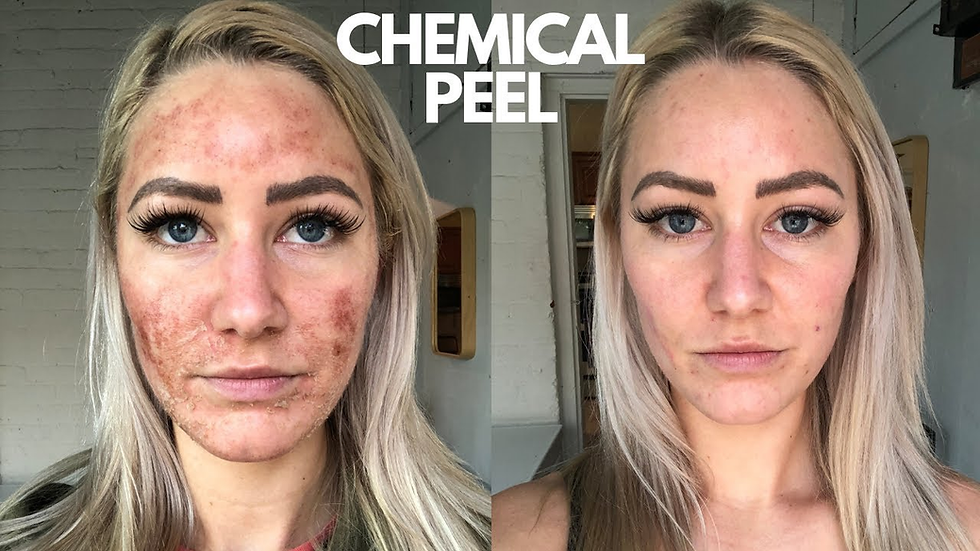What Else Needs to Happen Other Than the Laser Session for Fungal Nail Treatment?
- Manchester Dermatology Clinic

- Mar 30
- 3 min read

When it comes to treating fungal nail infections, laser treatment has emerged as a highly effective option for many patients. However, achieving optimal results involves more than just attending the laser session itself. At Manchester Dermatology Clinic, we emphasise the importance of a comprehensive treatment approach that extends beyond the initial procedure. In this blog, we’ll explore the essential steps you should take in conjunction with laser treatment to ensure a successful recovery and minimise the risk of reinfection. Understanding the Laser Treatment Process Laser treatment for fungal nails involves using concentrated light to target and destroy the fungus beneath the nail. While this procedure is quick and often requires no anaesthesia, it is just one component of a holistic treatment plan. Typically, patients undergo multiple laser sessions, each lasting around 30 minutes, depending on the severity of the infection. But what should you do in addition to these sessions?
Follow-Up Appointments
Regular follow-up appointments with your dermatologist are crucial for monitoring your progress. During these visits, your clinician can assess the treated nails, determine whether the infection is clearing up, and adjust your treatment plan as necessary. These appointments provide an opportunity to discuss any concerns or questions you may have about your recovery.
Post-Treatment Care
Following your laser session, adhering to the aftercare instructions provided by your dermatologist is essential. Here are some key points to consider:
Keep Feet Clean and Dry: Proper foot hygiene is critical in preventing reinfection. Wash your feet daily, ensuring you dry them thoroughly, especially between the toes.
Avoid Tight Footwear: Opt for breathable shoes for the first few days after treatment. Tight footwear can create a warm, moist environment that is conducive to fungal growth.
Limit Exposure to Moist Environments: Steer clear of communal showers, swimming pools, and saunas for a few days post-treatment to reduce the risk of exposure to fungi.
Consider Additional Treatments
In some cases, your dermatologist may recommend supplementary treatments to enhance the effectiveness of laser therapy. These could include:
Topical Antifungal Treatments: While laser therapy effectively targets the fungus beneath the nail, topical treatments can help clear any remaining fungal cells on the surface of the nail.
Oral Antifungal Medications: For severe or persistent infections, oral antifungal medications may be prescribed. These can work in conjunction with laser treatment to eradicate the infection more effectively.
Preventative Measures
Preventing future infections is just as important as treating the current one. Here are some strategies to consider:
Use Antif-ungal Powders or Sprays: Applying anti-Fungal products to your feet and shoes can help reduce the risk of reinfection, especially if you are prone to fungal infections.
Wear Breathable Socks: Opt for moisture-wicking socks made from breathable materials to keep your feet dry and cool.
Avoid Sharing Footwear: Do not share shoes or socks with others, as this can increase the risk of spreading or contracting fungal infections.
Monitor Nail Growth
After your treatment, it’s essential to keep an eye on how your nails are recovering. As new, healthy nail growth emerges, any lingering discolouration or damage should gradually fade. However, if you notice any signs of reinfection—such as thickening, discolouration, or a foul odour—contact your dermatologist immediately.
Lifestyle Adjustments
Sometimes, lifestyle changes can significantly impact nail health. Consider the following:
Dietary Considerations: A balanced diet rich in vitamins and minerals can support your immune system, helping your body fight off infections. Foods high in zinc and biotin are particularly beneficial for nail health.
Manage Foot Conditions: If you have underlying conditions such as diabetes or poor circulation, working with your healthcare provider to manage these issues can reduce your risk of fungal infections.
Conclusion While laser treatment is a powerful tool in the fight against fungal nail infections, it’s essential to view it as part of a broader treatment strategy. Follow-up appointments, diligent post-treatment care, and preventative measures all play vital roles in ensuring the success of your treatment. By taking these additional steps, you can significantly enhance your chances of achieving clear, healthy nails. At Manchester Dermatology Clinic, we are committed to providing comprehensive care for fungal nail infections. If you have any questions about the laser treatment process or what you can do to support your recovery, don’t hesitate to reach out. Our expert team is here to guide you on your journey to healthier nails! Fungal Nail Laser




Comments